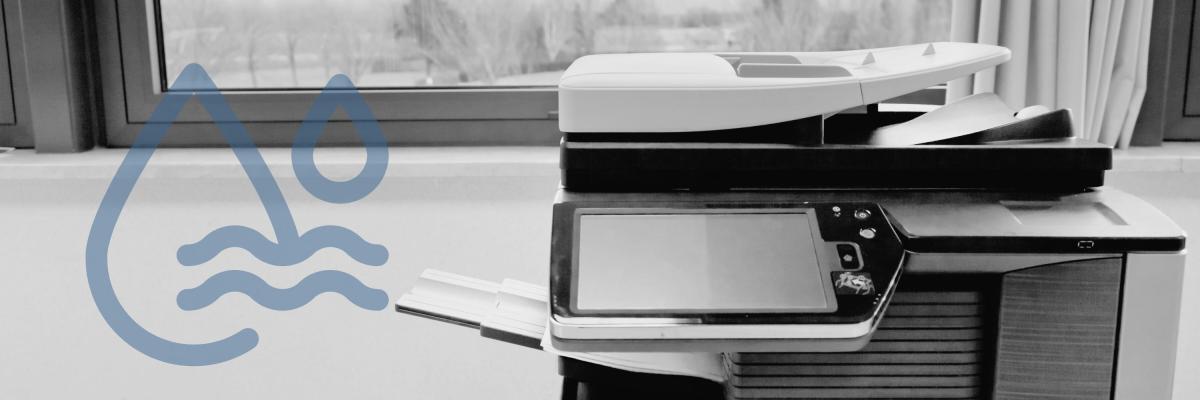
You rely on your printer to work when you need it—but have you ever considered whether your office setup is actually working against it? Many businesses unintentionally place their printers in less-than-ideal conditions, leading to frequent breakdowns, costly repairs, and a shorter lifespan.
At Strategic Technology Partners of Texas (STPT), we work with printers daily and have firsthand experience with how environmental factors impact performance. We’ve seen printers stored in overheated server rooms, placed directly under air vents, or even positioned in areas with high dust buildup—leading to premature wear and tear. The good news? Many of these issues are preventable with proper care.
By understanding the ideal conditions for your printer, you can extend its lifespan, reduce maintenance costs, and keep your office running smoothly. Let’s dive in.
Related Read: 5 Major Mistakes You're Making With Your Copier Printer
Why the Right Environmental Conditions Matter
Printers may seem like simple office devices, but they’re actually complex machines with sensitive internal components. Heat, humidity, dust, and even how you position your printer can impact performance.
Ignoring environmental factors can lead to:
- Frequent paper jams
- Smudged or faded prints
- Hardware malfunctions
- Increased maintenance costs
- A shorter overall lifespan
A well-maintained printer doesn’t just last longer—it also produces higher-quality prints, has fewer unexpected breakdowns, and helps businesses avoid costly downtime.
Related Read: 8 Tips to Increase the Lifespan of Your Printer/Copier
7 Environmental Factors That Impact Printer Performance
Here’s a look at the key environmental conditions that affect your printer and how to optimize them for the best performance.
1. Temperature & Heat Exposure
Ideal Condition: Keep your printer in a room with a temperature between 60-75°F (15-24°C). Avoid direct sunlight and extreme heat sources like radiators or server rooms.
Why It Matters: Printers contain delicate electronic components that can overheat if exposed to high temperatures. Overheating can lead to sudden shutdowns, ink cartridge issues, and even permanent damage to internal parts.
Real-World Example: A client once placed their printer next to a heat vent in winter—leading to repeated paper jams due to dried-out rollers. Moving it to a more stable environment immediately solved the issue.
2. Humidity Levels
Ideal Condition: Maintain humidity between 40-60% to prevent moisture buildup or excessive dryness.
Why It Matters: Too much moisture causes ink to smear and paper to curl, while low humidity dries out toner cartridges and paper, increasing static electricity and misfeeds. Learn more about toner and ink longevity here.
Real-World Example: A business in Houston stored their printer in a humid breakroom, and within months, they started seeing streaky prints and paper jams. Once they relocated it to a drier space, performance improved.
3. Dust & Debris
Ideal Condition: Keep your printer in a clean, dust-free area and dust it regularly.
Why It Matters: Dust accumulation inside a printer can clog vents, coat rollers, and interfere with internal sensors. This can lead to misfeeds, smudged prints, and performance issues.
Real-World Example: One office placed their printer near a high-traffic hallway, exposing it to excessive dust. After implementing a weekly cleaning routine, paper jams significantly went down.
Learn how to safely clean the inside and outside of your printer here.
4. Proper Ventilation
Ideal Condition: Place the printer in an open, well-ventilated area with at least a few inches of clearance around it.
Why It Matters: Poor ventilation leads to overheating, toner dust buildup, and inefficient operation.
5. Flat & Stable Surface
Ideal Condition: Keep the printer on a level, stable surface that won’t shake or vibrate.
Why It Matters: Uneven surfaces cause misalignment issues, leading to poor print quality and hardware strain.
6. Avoid Crowded Spaces
Ideal Condition: Printers need a certain amount of space to function optimally! Avoid cramming them into tight corners or underneath desks.
Why It Matters: Crowding limits airflow and increases dust buildup, causing overheating and paper feed issues.
Learn more about the importance of printer space requirements here.
7. Power Supply Considerations
Ideal Condition: Plug printers into surge protectors to prevent power spikes from damaging internal components.
Why It Matters: Sudden power surges can fry sensitive electronics and lead to costly repairs.
Learn about printer electrical requirements here.
Common Mistakes We See (And How to Fix Them)
At STPT, we’ve seen it all: printers placed in kitchen areas, stored in direct sunlight, or left completely neglected until they break down. One of the most common mistakes? Ignoring routine maintenance.
A Real-World Example:
One of our clients had a printer in a poorly ventilated storage room, surrounded by stacks of paper. The printer constantly overheated, leading to frequent service calls. Simply moving it to an open, ventilated office space reduced breakdowns by 60%!
Prevent Printer Problems with a Maintenance Plan
Even in ideal conditions, printers require maintenance. Regular servicing prevents costly breakdowns, extends the life of your machine, and keeps it running at peak performance.
With an STPT Maintenance Plan, you’ll get:
- Fast service response times
- Preventative maintenance
- Cost savings on repairs and parts
- Less downtime
- More productivity
Want to ensure your printer stays in top shape? A professional maintenance plan can help prevent costly repairs and extend your printer’s life. Learn more about the benefits of investing in a maintenance plan for your printer here.
A Little Care Goes a Long Way
Your printer is a valuable business tool, and with the right environmental conditions and regular maintenance, you can avoid frustrating issues, reduce repair costs, and extend its lifespan.
If you’re unsure whether your printer is in an optimal location, or if you want to ensure it stays in peak condition, contact our experts at Strategic Technology Partners of Texas.
Need expert help? Contact us today!
However, even the best care can’t save a printer that’s reaching the end of its life. If your printer is constantly breaking down, it might be time to consider an upgrade. Click the image banner below to learn about these warning signs before it’s too late!

